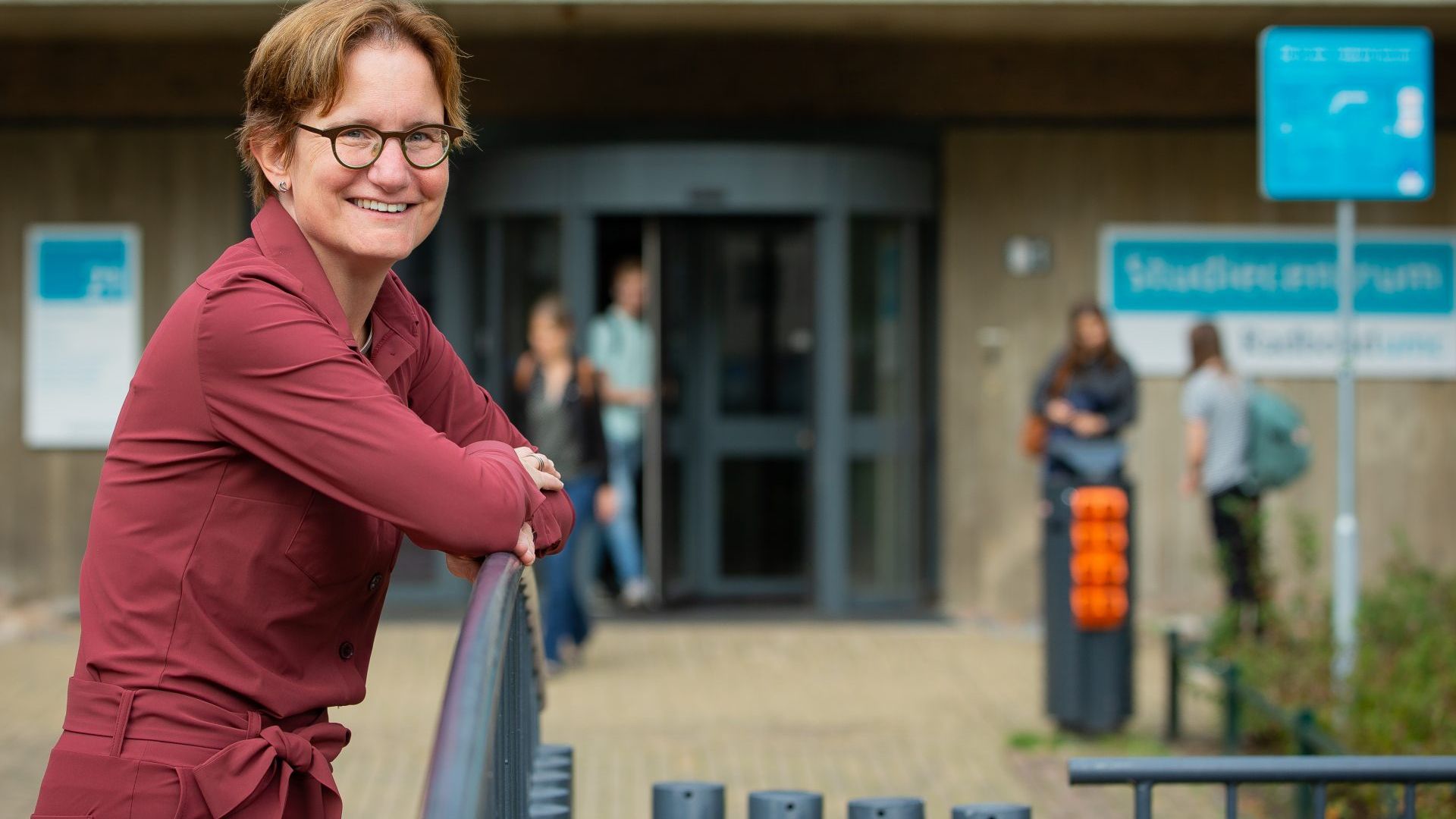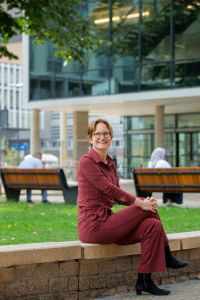Almost all aspiring doctors are white. This professor will investigate how to change that
-
 Karen Stegers-Jager. Photo: David van Haren
Karen Stegers-Jager. Photo: David van Haren
The average medical student is white and has highly educated parents. In order to promote diversity within the medical faculty, Professor Karen Stegers-Jager will conduct research on inclusion, diversity, and equal opportunities within medical education.
Diversity has been a focal point for Radboud University for years. Despite this, the majority of students, especially in the medical faculty, are predominantly white. Why is it that the medical education program lacks diversity, and in what ways can this be improved?
Karen Stegers-Jager explains that a diverse student population is crucial to combat biases in the medical field. She started this month as a professor of Innovative and Person-Centered Learning and Working in Healthcare. Stegers-Jager explains that, because doctors are influenced by – often unconscious – biases in their thinking and actions, it can happen that minority populations do not receive the same level of care.
‘A large group of young people doesn’t even consider medicine as a future study.’
‘We tend to like people who resemble us, and first impressions are also persistent. These are automatic processes that are difficult to break.’ According to Stegers-Jager, we can design admission and evaluation systems in a way that minimizes the impact of first impressions and biases. ‘I don’t have the illusion that we can solve this problem by having everyone take an implicit bias training,’ she adds with a smile.
Admissions
According to the professor, it starts before the official selection process. ‘There is a large group of young people who don’t even consider medicine as a future study. In my previous job in Rotterdam, we set up a program to encourage the future generation to think about whether this study might be suitable for them.’
For this purpose, students need to gain a better understanding of the program. ‘Up until now, the perception mainly consists of stereotypical specializations such as surgery and pediatrics. Not everyone will identify with that,’ says Stegers-Jager. When shaping the new admission procedures, Stegers-Jager wants to think carefully about this. ‘It should not only be a question of whether we consider the students suitable for the program but also whether the program suits them.’
Education
That’s not all, though. Stegers-Jager explains that when students enter clinical rotations, significant differences in assessments suddenly arise. ‘Students from minority backgrounds and students with less-educated parents receive significantly lower grades.’
That is noteworthy, says the professor. ‘This group achieves comparable scores during the bachelor’s program.’ It seems unlikely to Stegers-Jager that students from minority groups don’t perform as well in the clinical part as their peers, partly due to the size and diversity within this group.
‘If someone acts differently from you, that person is not automatically a less competent doctor.’
Where do these lower scores come from, then? Each country has its established ideas about how doctors should behave, explains Stegers-Jager. And the Netherlands is no exception; Dutch culture influences these ideas. For example, Dutch people tend to be quite assertive, the professor elaborates. In many other cultures, even among our country’s neighbours, this is not always appreciated. ‘Even something as small as a greeting with ‘hello’ or ‘good morning’ can carry different connotations in different cultures.’ People unconsciously judge based on these differences.
This is not very surprising. Stegers-Jager explains it’s human nature to use oneself as a reference point. ‘But just because someone acts differently from you, that person is not automatically a less competent doctor.’ That is why we need to look beyond the Dutch approach. ‘If we want to attract a diverse group of students, they should also have the opportunity to fully develop themselves.’
Assessment Methods
There have been suggestions to provide more narrative feedback instead of grades to combat unconscious discrimination. However, that also has its drawbacks, according to Stegers-Jager. ‘We tend to describe men and women in very different ways. In evaluations of male students, their knowledge and skills are emphasized, whereas for women, the focus is on patient-centered communication and kindness.’
What works better, according to Stegers-Jager, is to compel teachers to assess objectively. In Rotterdam, she helped ensure that instead of one overall grade for a clinical rotation, multiple interim grades were given for specific components. This had an immediate impact. ‘Simply structuring the assessment and involving multiple assessors already reduces differences between students.’
Through examples like these, Stegers-Jager is convinced that redesigning assessment systems can broaden the ‘white’ perspective. And that’s important, she says, because healthcare can benefit from this broader perspective. ‘Ultimately, it’s about providing patient-centred care for everyone, regardless of their background, sexual orientation, or limitations. But to do that, everyone needs to feel acknowledged and recognized; both the patient and the student.’
Translated by Siri Joustra




